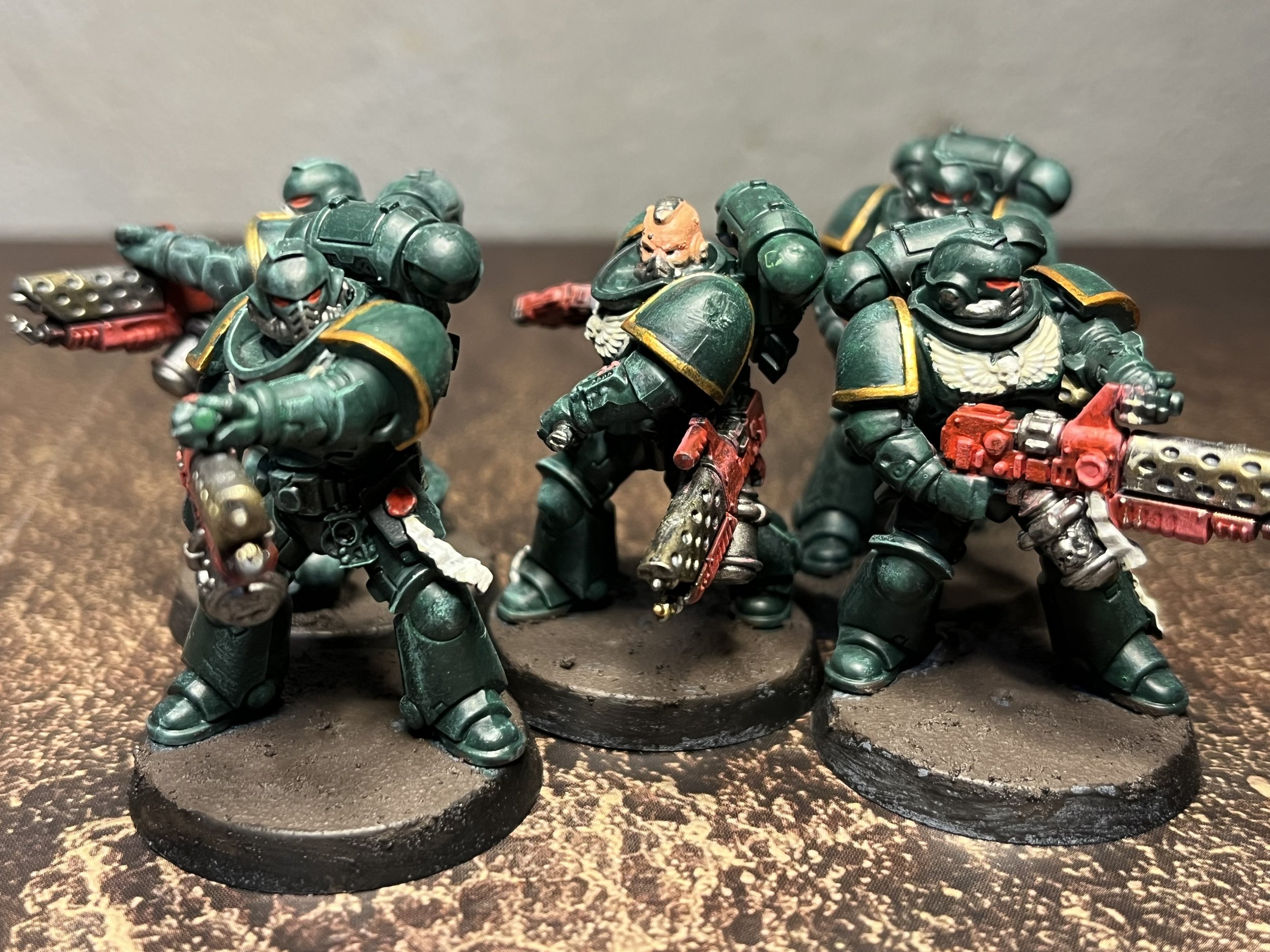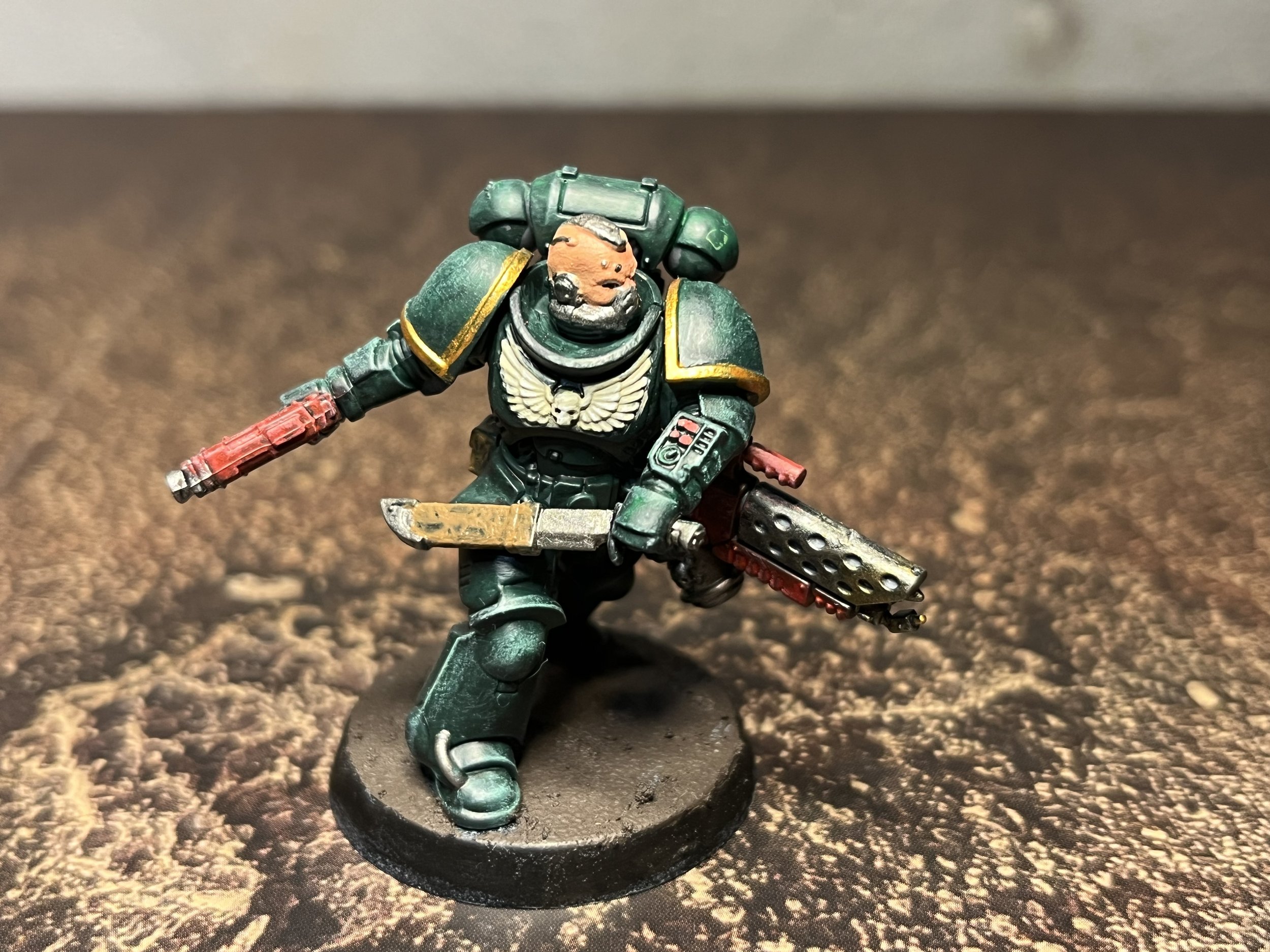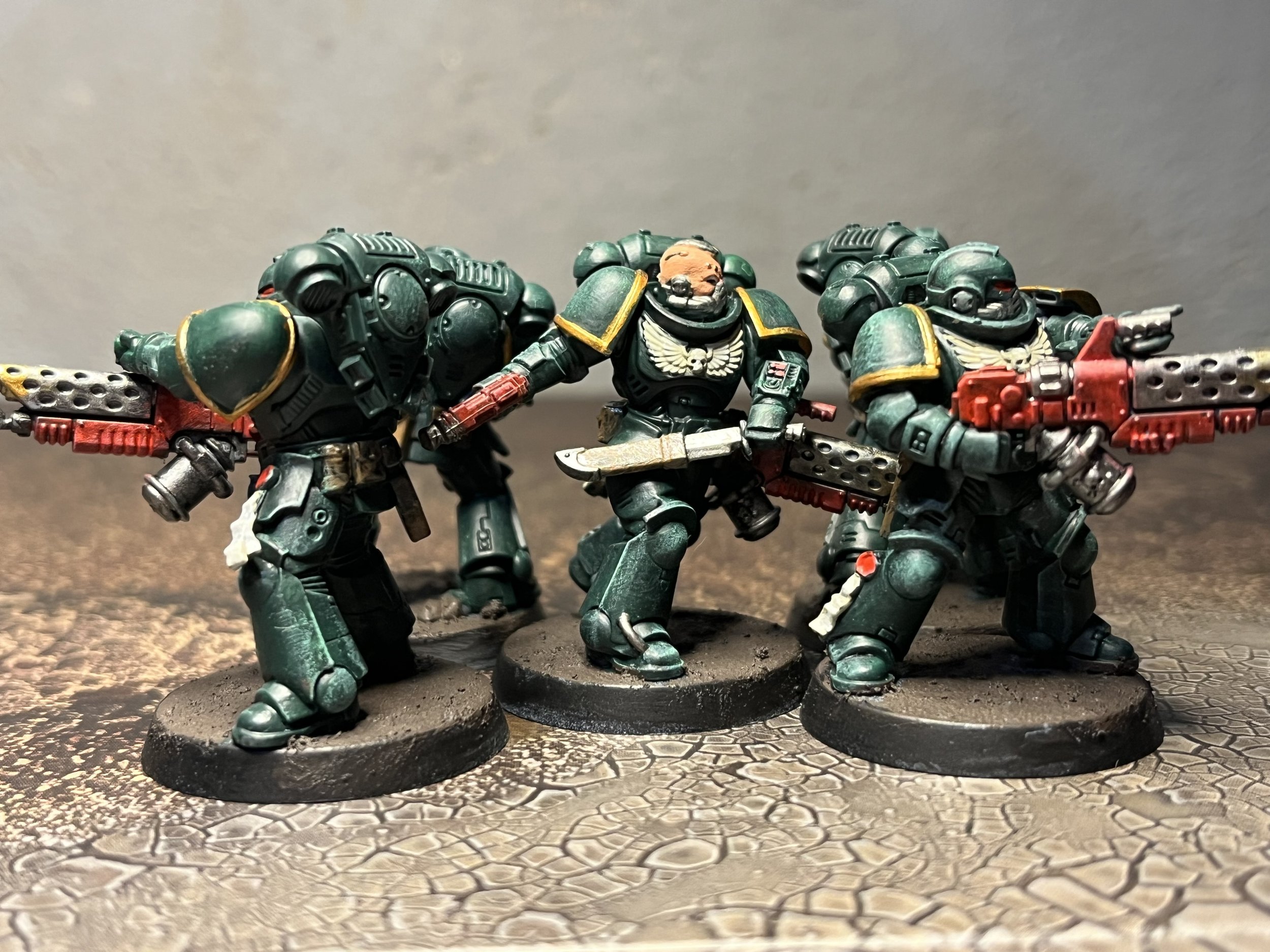My New Obsession, Warhammer 40,000 Miniatures
Getting Back Into Painting With Warhammer
Warhammer 40,000 is an oversized, dense, and outlandish science fantasy series with which I fell in love several years ago. I started by admiring the aesthetic and after ravenously devouring over twenty books in the series alongside much of the extended universe content. The Warhammer franchise and its universe inspire me as a creative writer and have genuinely brought me hundreds of hours of entertainment. Thus, I want to share it with the world.
However, one aspect of Warhammer 40,000 that I never engaged with was the tabletop game component. So, what is Warhammer 40,000, and why am I featuring it in my blog now? Join me for the first of many Miniature Monday posts featuring my painting journey and why Warhammer is one of the most expansive and rich fictional universes I have ever encountered.
What Is Warhammer?
Long Story, Short:
Warhammer is a nerdy little war game played on the tabletop between two players. It simulates large-scale battles between Fantasy or sci-fi-inspired armies of miniatures that collectors build, paint, and use to battle one another. My particular interest lies in the science fiction side of the hobby, and therefore, it will be the focus of the following few articles on the Brazen Bard Website.
Short Story, Long:
Warhammer 40,000 is a Games Workshop's intellectual property. But, what is Games Workshop? Initially slated to be called Games Garage, the company started in 1977 with its first product, White Dwarf, which offered mail-in options for importing and shipping popular tabletop games and fantasy RPG supplies to the United Kingdom. A year later, the flagship Games Workshop, or GW, store opened in London. There, the first in the line of Citadel-branded miniatures would go on sale as evergreen fantasy miniatures made for use in popular TTRPGs of the era.
A few years after the initial success of Games Workshop as a retailer for other game systems and supplies, the company introduced its first edition of Warhammer. The initial Warhammer games were unrecognizable from the current Sci-Fi aesthetic of the 40,000, as they were designed to simulate medieval fantasy and Tolkienesque-style fictional battles. It wouldn't be until 1987 when Warhammer 40,000 would be introduced, and the first edition of Sci-Fi wargaming saw its rise in the Rogue Trader's original rulesets.
Since the 1990s, Games Workshop has produced two distinct Warhammer games; each of these game systems has its own aesthetic, lines of miniatures and lore. Despite having similar names and grimdark themes, these games are two separate entities. Warhammer Fantasy (Now called Age of Sigmar) is a traditional fantasy wargame. In contrast, Warhammer 40,000 is the science fiction-themed game that is generally seen as the more popular and successful arm of Games Workshop and Citadel Miniatures. Over 30 years since their initial release, the Warhammer 40,000 rules and miniatures have seen worldwide success and a resurgence in popularity alongside other tabletop games in the past decade.
Now, this subheading has gone on for a long time, and I am going to move on to the more personal bits about this hobby. For more information about Warhammer and its legacy, check out the sources below.
The Space Marines
The poster boys of the Warhammer 40,000(40K) are the iconic Space Marines. Trained in the arts of war since youth, the Space Marines, or Astartes as they are often called in the books, are genetically augmented supersoldiers clad in thick layers of advanced power armor and armed with some of the future's most powerful weapons. They are a fractured and pseudo-religious monastic fighting force that follows strict protocols of indoctrination and tradition, which are drilled into them from their induction into the ranks of the Space Marines.
The Space Marines can be roughly divided between those who are loyal to the Imperium of Man (Humanity) and the traitors who swear themselves to the dark gods of Chaos (Demons). They are an essential elite fighting force in the 40K universe, where horrors far more intelligent, brutal, and dangerous than humanity thrive in the dark corners of the galaxy. Space Marines are functionally immortal, with some living to be over 10,000 years old. However, few make it more than a few centuries, as their lives are given willingly in service to their Imperium or Chaos Gods.
There are hundreds of Space Marine chapters, each following its own culture and traditions, but all fighting for the future of humanity. Yet all can trace their lineage to one of eighteen separate legions that once led a campaign of human expansionism and reunion in the year 30,000. However, we can get more into that in a later article. All that matters right now are the green or bone-colored armored brothers of the Dark Angels, who will be detailed in the next Space Marine-focused blog post.
Infernus Marines
The first set of Space Marine Miniatures I have built and painted are those of the Infernus Marines. Led by their Sergeant, who bears a bolter and sword alongside his flamer, they are a squad of five who wear identical power armor and weaponry. On the tabletop, the Infernus Marines are deadly close-range infantry combatants that serve as crucial damage dealers for maintaining objectives and roasting the miniatures of the opponent's army. In lore, they are a specialized squadron made to clear bunkers, take out fortified targets, and cull large swathes of unarmored infantry.
Space Marine Sergeant, Leader of this Infernus Squad
For their paint scheme, I did a thin undercoat of dark green, topped with a black wash to create the depth you see in the recessed parts of their armor. The chest ornaments were based in bone and highlighted with pure white. Their weapons are base coated in a deep red and weapons based in a metallic gray. After basing, I did a few layers of green contrast with lighter green highlights and a mixture of red and white to create a lighter shade on the weapons. Details and edge highlighting of bright green, gold trim, and metallic silver help to make the figure stand out, and a thin brown technical paint makes up the relatively simple base color. Final details include the red highlights on the eye lenses and a thin gold layer near the muzzle of each of the flame throwers to simulate use in battle.
While the level of detail in the minis can seem like a lot, the entire painting took me about five hours as I painted them in bulk layers while other figures were drying. You don't need to paint your minis with the same level of detail as to be tournament-ready; you only need to base them, which can take as little as an hour or less with airbrushes. If you want me to paint your minis, contact me via the Services page.
Supplies Used:
Basecoats:
Citadel Gray Primer (Spray)
Citadel Caliban Green for armor basecoat
Citadel Waithbone for insignia basecoat
Citadel Mephiston Red for nonmetallic weapons basecoat
Citadel Nuln Oil wash
Citadel Bugman Glow for flesh
Layer Coats:
Citadel Dark Angels Green for armor shadows
Army Painter Pure Red for weapons
Army Painter Greenskin for large armor sections
Citadel Leadbelcher Metallic for weapon barrels and face masks
Army Painter Leather for pouches and bolt pistol holsters
Army Painter Barbarian Flesh for flesh
Highlights:
50/50 Mix, Greenskin, and Pure White for armor
50/50, Thinned, Citadel Retributor Armor for weapon weathering
Citadel Retributor Armor for pauldron highlights
Upcoming Miniature Painting And Warhammer Articles
Next week, we will introduce the Tyranids, otherwise known as the Space Bugs of Death. Afterward, we will switch between the Space Marine army and the Tyranid army, providing lore, paint updates, and more!









